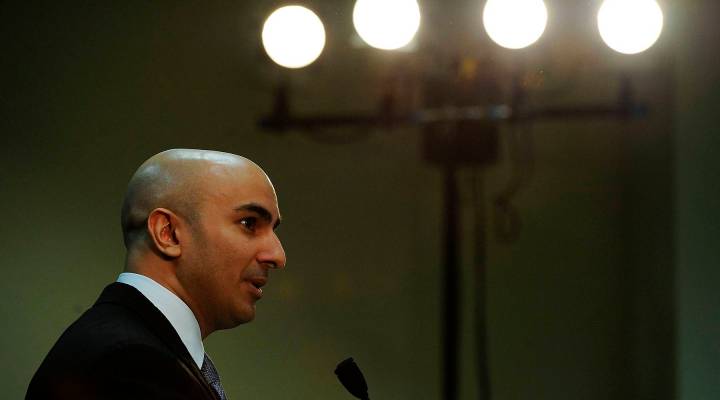
Neel Kashkari wants to end Too Big To Fail

In 2008, Neel Kashkari was working for the Treasury Department as it planned its response to the financial crisis. He would go on to head one of those solutions, the Troubled Asset Relief Program, or TARP. In the years since then, he’s worked in the private sector, ran for governor of California and is now the President of the Federal Reserve Bank of Minneapolis.
It’s been less than a year since he took up that role, but now he’s making it his mission to end Too Big to Fail through four steps he’s calling “The Minneapolis Plan.”
On why he wants banks to get smaller:
The financial crisis was traumatic for a lot of people. I was at Treasury, one of the first responders, trying to keep the U.S. economy from collapsing. That’s what’s motivating this. I don’t want anyone in the U.S., the people to ever face this again. We need to address Too Big to Fail so that we don’t repeat the same mistakes we made last time.
On why he thinks Dodd-Frank doesn’t go far enough:
Before the crisis, there was an 84 percent chance of having that type of a crisis in the next century. That risk has now been reduced to 67 percent. So it’s progress, but in my book, 67 percent is still way too high … we get it to just under 10 percent by making the banks issue a lot more capital, a lot more buffer against bad things from happening in the future.
On why he thinks Trump might support the plan, even though the incoming President has said he wants to loosen regulations:
I’ve heard him say that, but I’ve also heard him say that the biggest banks were part of the crisis and that we need to make sure that that doesn’t happen again so I’m not sure year where the new administration is going to be. We’re putting the data out there, we’re putting the analysis out there, we’re putting a credible plan forward so that Congress or the administration can take it forward if they choose to.
On why he thinks the plan is worth slowing GDP growth:
Nothing is free. So it’s just like safety. Think about terrorism. We cannot eliminate the risk of a future terrorist event, we cannot make it zero. And safety isn’t free. We pay for more law enforcement, we pay for more metal detectors, so the public decides how much safety they want and what price they’re willing to pay. The same thing is true in financial stability. Financial crises are so expensive, so costly for main street that we can afford to spend a little bit of money in terms of making the banks safer to avoid those terrible outcomes.
There’s a lot happening in the world. Through it all, Marketplace is here for you.
You rely on Marketplace to break down the world’s events and tell you how it affects you in a fact-based, approachable way. We rely on your financial support to keep making that possible.
Your donation today powers the independent journalism that you rely on. For just $5/month, you can help sustain Marketplace so we can keep reporting on the things that matter to you.












